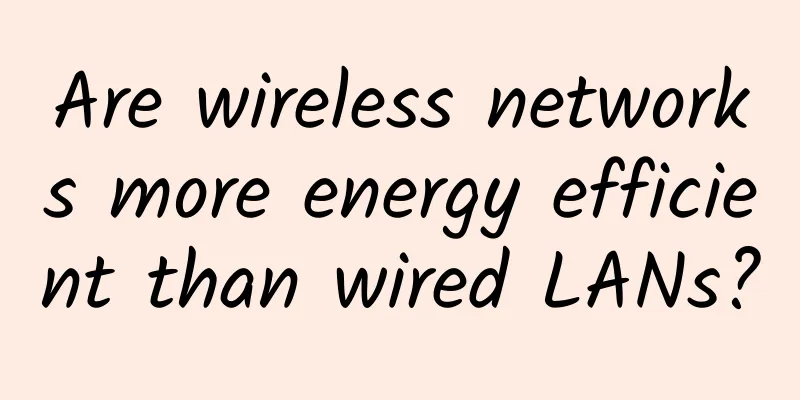Wireless AP Capacity and Network Bandwidth Calculation Method

|
Wireless AP is the access point for users to enter the wired network using wireless devices (mobile devices such as mobile phones and wireless devices such as laptops). It is mainly used in broadband homes, inside buildings, campuses, parks, warehouses, factories and other places that require wireless monitoring. The typical coverage distance is tens of meters to hundreds of meters. It can also be used for long-distance transmission. The farthest can reach about 30KM. The main technology is IEEE802.11 series. Most wireless APs also have access point client mode (AP client), which can connect to other APs wirelessly to extend the coverage of the network.
When building a wireless network, you will definitely encounter this problem: After investigating the environment, how can you accurately, scientifically, and quickly predict the approximate demand for wireless APs? With this question in mind, let's discuss how to use bandwidth to estimate the deployment volume of wireless APs. 1. Factors Affecting the Number of Wireless APs When estimating the number of wireless APs, four key points need to be clarified, namely network bandwidth, throughput, AP coverage distance, and number of access users. The following describes how these key points affect the number of wireless APs. 1. Network bandwidth When discussing link bandwidth, we usually refer to the number of bits that can be transmitted per second on the link, emphasizing the maximum rate that can be achieved. For example, the bandwidth of 100M Ethernet is 100Mbps, and the bandwidth of Gigabit Ethernet is 1000Mbps. 2. Throughput Throughput and bandwidth are words that are easily confused. When discussing the bandwidth of a communication link, it generally refers to the number of bits that can be transmitted per second on the link. It depends on the link clock rate and channel coding, which is also called line speed in computer networks. In other words, the bandwidth of 100M Ethernet is 100Mbps. The difference between bandwidth and throughput: bandwidth emphasizes the maximum speed that can be achieved, while throughput emphasizes the speed under actual circumstances. Due to the influence of various inefficiencies in reality, it is usually preferred to use "throughput" to express the performance of the network. 3. Coverage In non-high-density areas, the number of wireless APs can be roughly determined based on the actual area of the scene and the recommended coverage range. In some cases, the maximum coverage distance can also be calculated, and the coverage range can be appropriately adjusted based on the power. 4. Number of users In high-density areas, the number of access users also needs to be considered. Different models of wireless APs have different recommended access users in different scenarios. The number of wireless APs can be determined by the number of concurrent access users (there are slight differences between laptops and mobile phones). 2. Bandwidth calculation of wireless AP quantity Many friends are often asked by customers such questions: In this scenario and this solution, so many APs are deployed. Does the bandwidth support it? If not, will the user's Internet speed become slow? Or how much export bandwidth is needed for the deployed APs?
For example: A university has 30,000 on-campus users and 15,000 mobile terminal users. The concurrency ratio is calculated as 50% to 70%, and the bandwidth per user is 512 Kbps. Find the approximate WLAN capacity and number of APs. answer:
3. Calculation of actual Internet application bandwidth When many people do project demonstrations, they will intuitively test the speed by connecting the device to WiFi. However, the download speed can also be used to simply estimate the theoretical broadband rate of the corresponding application. Network speed unit:
Generally speaking, if we say that the Internet speed is 100 Mbps, it means 100 Mbps. If you download software from the Internet, the speed unit displayed is Bps, which is the number of bytes downloaded per second. Therefore, it is important to distinguish that the units of Internet speed are different in different situations and cannot be mistaken, because the speed of these two expressions differs by more than 10 times. In computer networks and IDC rooms, the unit of broadband speed is bps (or b/s); the conversion relationship is: 1 Byte = 8 bits
Broadband *** download theoretical value:
In actual Internet applications, when downloading software, you often see broadband speeds such as 128KB (KB/s), 103KB/s, etc. This is because the line bandwidth provided by the ISP uses bits, while general download software displays bytes (1 byte = 8 bits), so you have to convert to get the actual value. However, we can convert it according to the conversion formula: 128KB/s=128×8(Kb/s)=1024Kb/s=1Mb/s: 128KB/s=1Mb/s In theory:
The uplink rate refers to the data transmission rate when the user's computer sends information to the network, and the downlink rate refers to the data transmission rate when the network sends information to the user's computer. For example, when uploading files to the Internet using FTP, the uplink rate affects the upload speed; and when downloading files from the Internet, the downlink rate affects the download speed. Of course, in the actual uploading and downloading process, the quality of the line, equipment (including computers and other equipment), etc. will also have more or less impact on the speed. The above data is mainly caused by multiple factors such as user computer performance, network equipment quality, resource usage, network peak period, website service capacity, line loss, signal attenuation, etc. |
<<: 5G bearer network operation is difficult, but machine learning technology can solve it
Recommend
New opportunities brought by 5G millimeter wave fixed wireless
The broadband industry’s new mission is to extend...
Edge computing expected to thrive post-coronavirus
Before the global outbreak of the coronavirus, ed...
Hosteons announces that it will switch to KVM for free for OpenVZ users
Hosteons released the OpenVZ 7 VPS Migration to K...
The 17th China Enterprise Annual Selection List for 2022 was announced: Juniper Networks China CTO Jing Youhao won the 2022 IT Industry Network Outstanding Contributor
In November 2022, the "China Enterprise &quo...
#Has run away#Limewave: $2.8/month-1GB/10GB/1TB/Seattle data center, free upgrade to double memory/monthly traffic by submitting a work order
【Attention】This merchant has run away!!! Limewave...
my country has built more than 2.93 million 5G base stations, and the number of 5G mobile phone users has reached 676 million.
July 19 news, at today's State Council Inform...
Verizon achieves 711 Mbps 5G upload speed
[[429131]] Verizon said it achieved upload speeds...
Maxthon Hosting: Los Angeles CN2 GIA/Hong Kong CN2 Line VPS Monthly Payment Starting from 54 Yuan, Dual Core/2G Memory/30G SSD/100M Bandwidth
Aoyo Hosting has not launched a new promotion for...
Krypt: ION Cloud Platform 2nd Anniversary San Jose CN2 GIA/Singapore CN2 GIA 20% off
Time flies. It has been two years since Krypt lau...
Huawei's "Knowledge Conference 2020" is about to kick off, let's join the carnival party for "knowledgeable people"!
Where the will goes, there is a way; not even the...
Ten questions about the issuance of 5G temporary licenses: how far is 5G?
Recently, authoritative information about 5G has ...
Still don't understand router networking? You will understand after reading this article
As consumers' living standards improve, more ...
How will the network be reconstructed in the 5G era?
The 5G era is approaching. While people are full ...
Cloud computing, IoT and SDN pose the biggest challenges to enterprise networks
According to a new report released by Kentik, clo...
5G paves the way for the 14th Five-Year Plan and sets sail for a new era of digital economy
The year 2020 has multiple "identities"...









